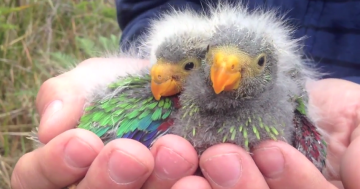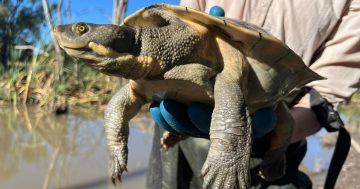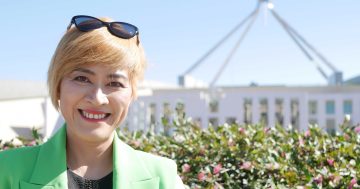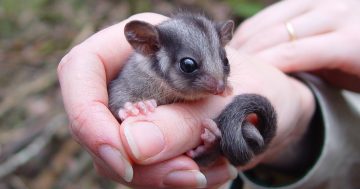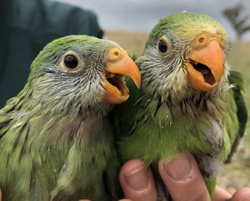 Only half a per cent of the available tree hollows in Canberra’s woodlands are suitable nests for the city’s Superb Parrots according to new research released jointly by the ACT Parks and Conservation Service and Australian National University (ANU).
Only half a per cent of the available tree hollows in Canberra’s woodlands are suitable nests for the city’s Superb Parrots according to new research released jointly by the ACT Parks and Conservation Service and Australian National University (ANU).
Study co-author and Senior Ecologist with ACT Parks and Conservation, Laura Rayner said the Superb Parrots were a listed vulnerable species with a small resident population in Canberra.
Dr Rayner said the study found that the search for a suitable nesting site could have a big impact on how many offspring Superb Parrots were able to produce.
“Previously ANU researchers have shown that these sleek green birds depend on tree hollows for nesting, but that their preferred nest sites are extremely rare,” Dr Rayner said.
Lead researcher and Postdoctoral Fellow at ANU, Dejan Stojanovic said the study showed that breeding pairs of Superb Parrots that could secure a good quality nesting site over multiple years produced more than double the offspring of unsuccessful pairs.
Dr Stojanovic said that of the 181 Superb Parrots born over five years, 60 per cent were the offspring of only 13 breeding pairs that monopolised preferred nest hollows.
“The remaining 40 per cent of births were attributed to 21 breeding pairs that bred only once during the five year study,” Dr Stojanovic said.
“Repeat breeders rarely switched their nesting site, showing that once the parrots find a good place to breed, holding on to that nest is critical for success,” he said.
“The study raises important questions about superb parrot breeding and the longevity of the species.”
Dr Stojanovic said understanding why some pairs only bred once and confirming whether one-time breeders died or dispersed to other locations was crucial to understanding the conservation needs of the species.
Dr Rayner said the lack of breeding by local nestlings was a worry, and also a surprise.
“We don’t know what happens to young superb parrots after they leave their nests, but our genetic sampling shows that they are not breeding where they were born,” she said.
“Our research highlights that access to suitable nesting hollows is critical for superb parrots.”
“However, encroachment on nesting areas by suburbs and agriculture likely escalates competition for this rare and declining resource,” Dr Rayner said.


